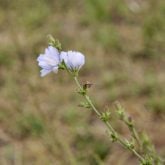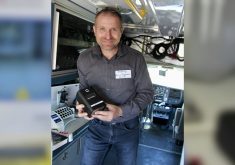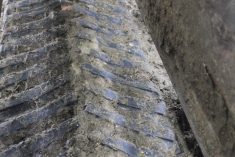Dr. Wendy Wilkins, disease surveillance veterinarian with the Saskatchewan Ministry of Agriculture, administers the provincial BVD screening and control program. “Here in Saskatchewan this program provides free testing for producers who are looking for PI calves within their herd. We don’t do whole-herd screening but we do offer testing for any dead, deformed, aborted or sick calves,” she says. If any young animal raises suspicion that it could have (or could have died from) BVD, it should be tested — including yearlings, if those yearlings are still on the farm where they were born.
Read Also

What to know before you go to Agribition 2025
If you’re attending Agribition 2025, this is the place to find out about tickets, dates and what’s happening this year.
“We’ve had queries from feedlots wondering if we could test their feedlot cattle, thinking they might have a PI animal, but our purpose is to help the producer control BVD on farm,” she explains.
“If producers want to test, we ask them to work with their veterinarian. The IHC (immunohistochemistry) test done at PDS laboratory (Prairie Diagnostic Services) is done on a skin sample. In the case of a live animal we recommend that producers take an ear notch and submit that through their veterinarian to PDS. If the veterinarians are aware of our program and have contacted me, they likely have prepaid shipping labels and the cost of shipping the samples to the lab is covered, as well. If they don’t, then the producer must pay the cost of shipping because we do not reimburse that cost,” she says.
The veterinarian or the producer can collect the sample. If the calf is dead, or it’s an aborted fetus, the producer can take the ear or a piece of the ear to the vet clinic and have the veterinarian submit it.
“If results come back positive, identifying that calf as a PI animal, this program will also reimburse the producer (up to $500) for veterinary consultation fees related to development of a customized BVD control program for their herd, to start working toward getting rid of this disease in their herd,” says Wilkins.
This program started with a pilot project in 2013. In 2014 it was rolled into an ongoing program, funded under Growing Forward II. “Funding for this program is only confirmed until March 31, 2018. It is likely the program will be continued beyond that, but we can’t say for sure,” she says.
“We have found that this program is underutilized, when we compare the tests requested at PDS versus those paid through our program. There are quite a number of tests being done at PDS for BVD outside of our program and it may be due to a lack of awareness about the program, or may be related to convenience. If a producer submits a test, outside of our program, and it comes back positive, they can still apply to our program for the $500 reimbursement.” They can utilize the program in their effort to work with their veterinarian to develop a plan to control BVD in their herd.
Some producers may not know about the program. “It’s difficult to get the word out. A couple times a year we remind veterinarians about it and we go through our regional services specialists and government publications, but the targeted audience still has to read the message or hear about it,” she says. Sometimes ranchers hear about these things by word of mouth, such as from a neighbour. Wilkins hopes that more producers will learn about the program and utilize it if they want to test an animal in their herd.















